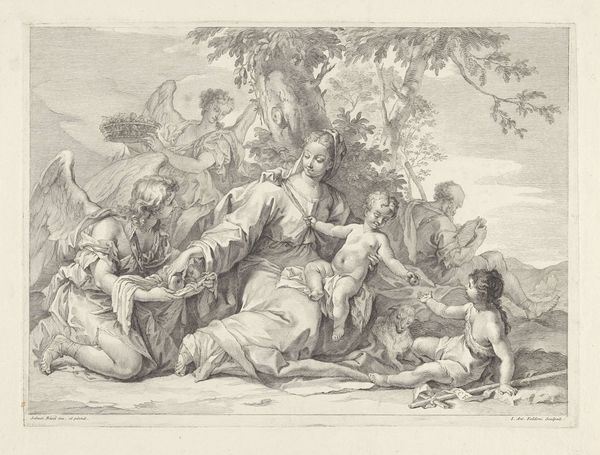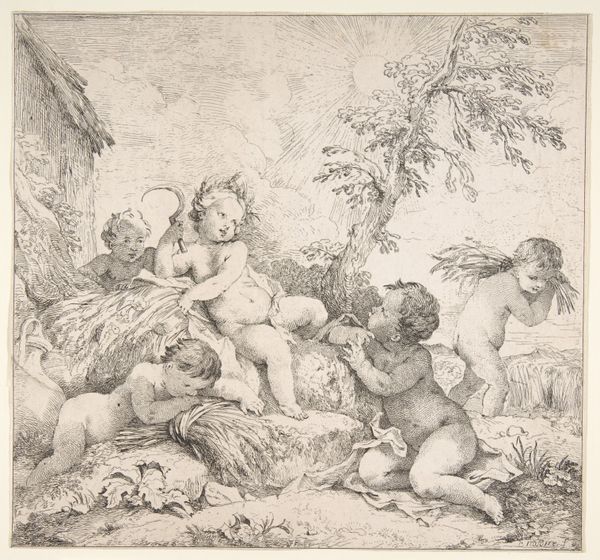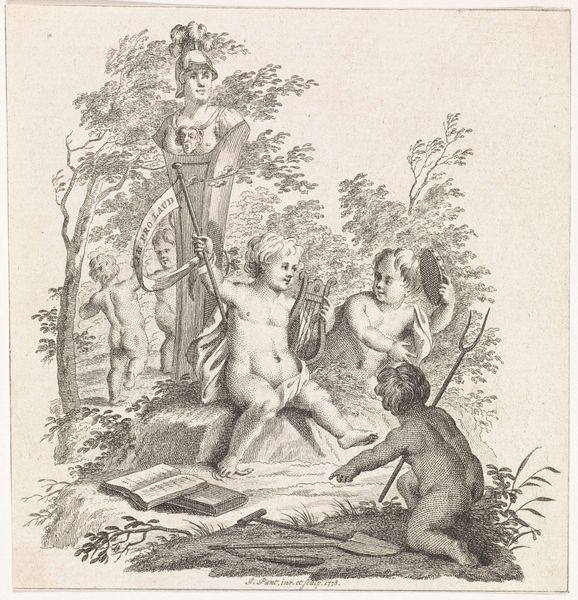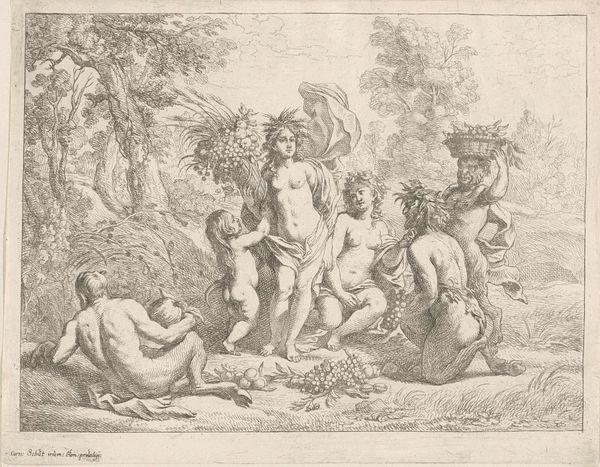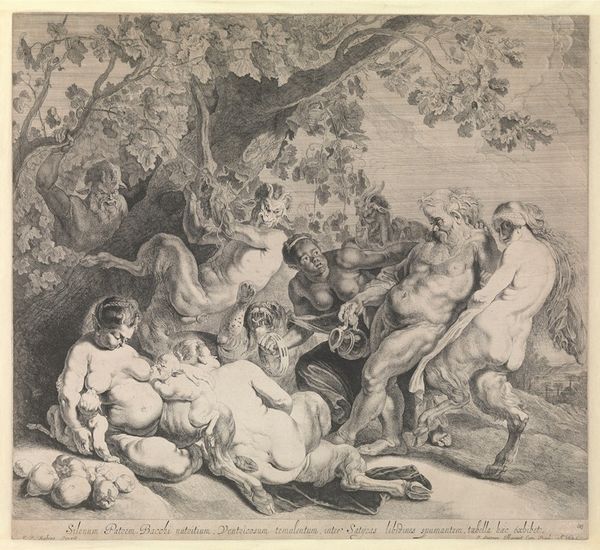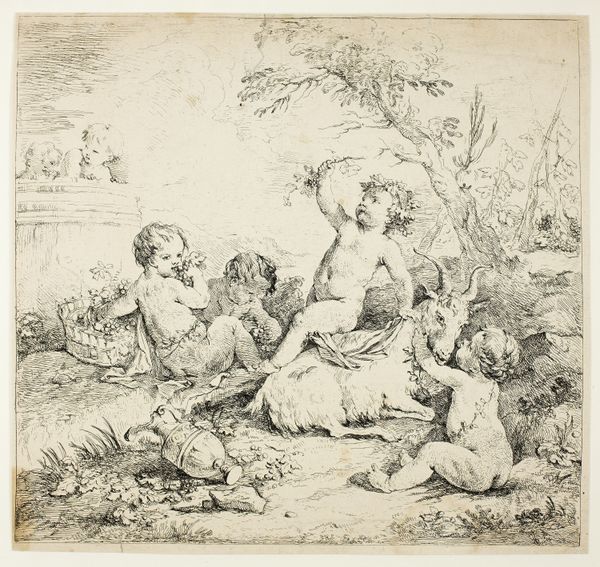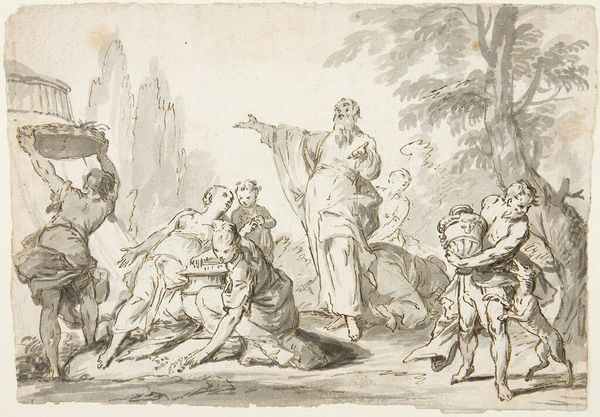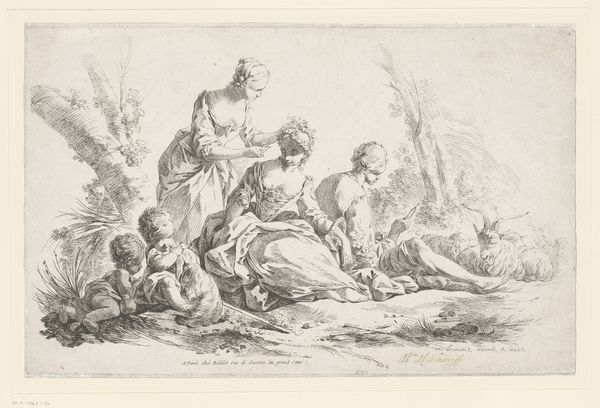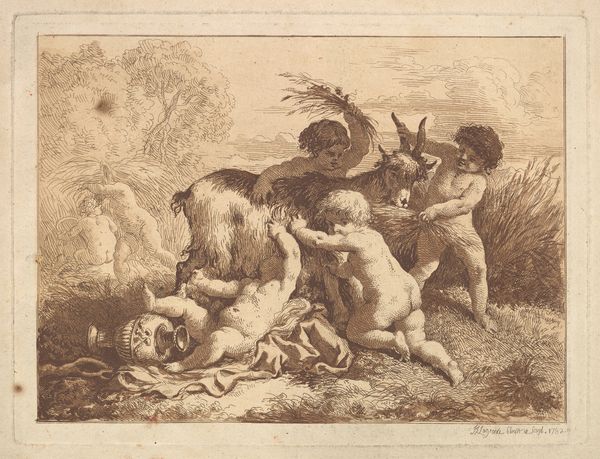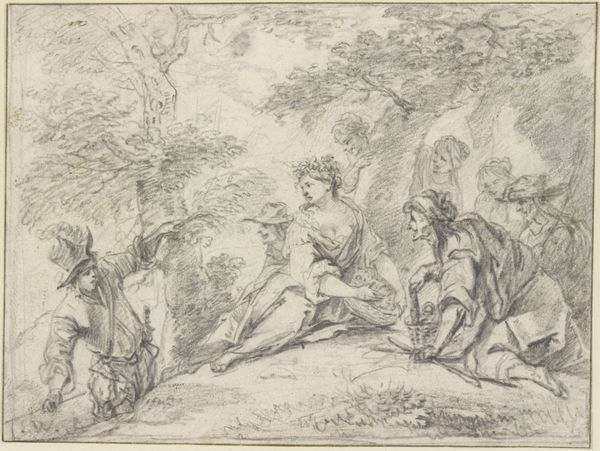
Allegorische voorstelling met kinderen met een mand met bloemen c. 1702 - 1765
0:00
0:00
drawing, paper, ink, pencil
#
drawing
#
allegory
#
baroque
#
landscape
#
figuration
#
paper
#
ink
#
pencil
Dimensions: height 140 mm, width 195 mm
Copyright: Rijks Museum: Open Domain
Curator: Ah, this pencil, ink, and paper drawing. It's titled "Allegorical Representation with Children Holding a Basket of Flowers" and is attributed to Johann Heinrich Keller, likely created sometime between 1702 and 1765. The style suggests a Baroque sensibility. Editor: It strikes me as so delicate, almost ethereal. Look at the varying weights of the lines, how some fade into the background, creating a dreamlike quality. Is that intentional, I wonder? Curator: Very likely. Baroque art is often theatrical, designed to evoke an emotional response. The children, seemingly putti or cherubs, embody innocence and beauty, enhanced by the idealized landscape. The flowers, of course, traditionally symbolize both fragility and fecundity. A poignant allegory, really. Editor: I'm immediately drawn to the paper itself. You can almost feel its texture through the rendering of the ink. The economic use of the media—the hatching, the open spaces—that choice had to be intentional. I wonder about the labor involved. How readily available and costly was quality paper during that time for Keller? It feels quite precious. Curator: Good point! Access to such fine paper absolutely dictated the kinds of work an artist could produce, and who would eventually acquire the work. These children might be personifying virtues or seasons. I note the garland: flowers linked together suggest unity or the passage of time. Editor: It makes me think about the guilds too and the relationships between art production and society, which I am assuming were probably under noble and clerical purview at that time. How would Keller’s status dictate subject choice and execution, which seem fairly idealized in both subject and process here. Curator: Precisely. An allegorical depiction speaks directly to established codes and values, offering layers of symbolic reading that his patrons were clearly familiar with. The garland, for instance, might have served as a family crest, promising longevity and continuity, maybe for new generations. Editor: This certainly invites reflection on the historical conditions that enable artistic creation. Curator: And on how certain themes and motifs echo through generations. Seeing such a wealth of associations now—very striking!
Comments
No comments
Be the first to comment and join the conversation on the ultimate creative platform.
